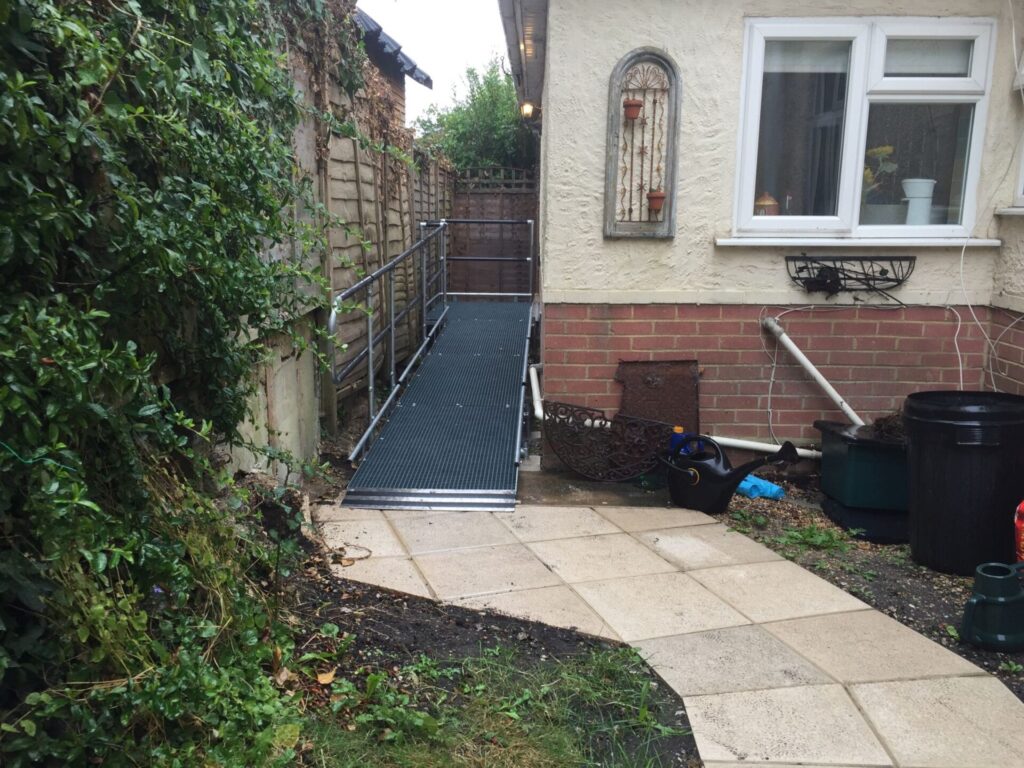When it comes to ensuring accessibility, one of the most important aspects of a wheelchair ramp is its slope. The slope is often described using the concept of “rise over run,” which is crucial in determining how steep the ramp will be. In this blog post, we’ll look at what “rise over run” means, how to calculate it, and why it’s vital for creating a safe and accessible ramp.
Rise over run is a simple mathematical way to describe the slope of a ramp. The rise refers to the vertical height that the ramp needs to overcome, while the run refers to the horizontal distance over which the ramp extends. Essentially, the slope of a ramp is determined by how much the ramp rises for a given amount of horizontal distance.
This ratio is often expressed as a fraction or a ratio, like 1:12, which means for every 12 units of horizontal distance (run), the ramp rises by 1 unit of height (rise).
Why is Rise Over Run Important?
The steepness of a ramp is critical for safety and usability. If a ramp is too steep, it can be difficult or even impossible for someone in a wheelchair to use it independently. The rise over run ratio ensures that the ramp is not too steep and remains safe and accessible for all users.

Recommended Ratios for Wheelchair Ramps
Building codes and accessibility guidelines often provide recommendations or requirements for the rise over run ratio for wheelchair ramps. In the UK, the Equality Act 2010 requires that ramps used by the public must be designed to specific standards. The recommended rise over run ratios are:
- 1:12 for public access ramps: For every inch of rise, there should be 12 inches of run. This is the standard ratio for public buildings and spaces to ensure that ramps are easily navigable by wheelchair users.
- 1:20 for longer ramps: For longer ramps, a shallower slope is often recommended, such as a 1:20 ratio, which makes it even easier to ascend.
Calculating the Length of a Ramp Using Rise Over Run
To calculate the length of a ramp using the rise over run ratio, you can use a simple formula:

For example, if you have a step that is 30 cm high (rise) and you are using a 1:12 ratio, the length of the ramp (run) should be:

So, you would need a ramp that is 360 cm long to safely accommodate a rise of 30 cm with a 1:12 slope.
Why Proper Slope is Essential
Maintaining the correct rise over run ratio is not just about compliance with regulations; it’s about ensuring that the ramp is functional and safe. A well-designed ramp allows for easy, independent use by wheelchair users, reduces the risk of accidents, and ensures that the building is accessible to all.
If you’re looking for high-quality wheelchair ramps designed with accessibility in mind, explore the options available at Ramps for Access. We offer a range of ramps that meet the required standards and can be customised to suit your specific needs.
Read more about our range of modular wheelchair ramps, portable wheelchair ramps, and our popular adjustable GRiP ramps.
